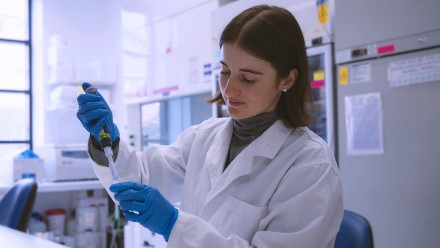Asthma
Investigation of airway closure in asthma using Technegas and simultaneous emission/transmission SPECT
Dr Greg G. King
Respiratory Physician, Royal Prince Alfred Hospital, Sydney, Australia.
Introduction
Asthma is an inflammatory disease affecting between about 12-22% of children and between abut 5-10% of adults, in Australia and New Zealand. It is also a cause of death in around 400 Australians per year.
The main functional abnormality in asthmatic airways is thought to be generalised narrowing in response to a variety of inhaled irritants. Some common irritants include house dust mite faecal particles (Dermatophagoides pteryonissinus & Dermatophagoides farinae), cold dry air, house dust, particles of dried cat saliva from cat fur and pollens. However, there is evidence that asthmatic airways are able to close completely during asthma attacks.
Airway closure may be an important during severe attacks of asthma, including life-threatening and fatal attacks. Airway closure may also be one of the important determinants of the perception of symptoms. For example, asthmatics may perceive symptoms more if their airway close, than if their airways just narrow. This may therefore be associated with differences in medication use to control symptoms.
Research in airway closure in asthma is currently being conducted at the Institute of Respiratory Medicine, Sydney, Australia. A new method of measuring airway closure in humans is being developed which uses Technegas and simultaneous emission/transmission Single Photon Emission Computed Tomography (SPECT).
The technique is based on the following:
1. Airways close at low lung volume.
The lungs and airways are elastic structures. At full inspiration, stretching the lung also stretches the airways to their most open position because the lung is connected to the airways.

Because the lung 'hangs' off the upper part of the chest, the weight of the lung stretches the top part of the lungs (and hence the airways) more than the bottom. Hence, the airways at the top are stretched more than the airways at the bottom. During lung deflation (breathing out), the amount of stretch decreases to the point that, in the lower-most parts of the lungs, the airways of normal people close completely.
2. Inhalation of a gas bolus after full expiration.
The subject exhales fully before inhaling the Technegas bolus. Because some airways are closed after a full exhalation, when a small bolus of gas is inhaled, the bolus only goes to the lung whose airways were open. After the bolus has entered the lung, the subject continues to inhale fully with room air. By the time the closed airways reopen, the gas bolus has already gone past those airways.
The top diagram of the airway shown below and alveolus shows closure of the lower airway at the start of inhalation. The red arrow represents the small bolus of Technegas which flows only into the alveoli whose airways are open. Blue represents air. The lower diagram shows that after complete inhalation, the Technegas has been fully inhaled into the alveoli. By the time the Technegas has entered the alveoli whose airways were open, the closed airways reopen, allowing air to enter them as inhalation continues.

3. The use of Technegas as the 'gas' bolus.
A SPECT lung scan takes around 20 minutes to acquire, therefore the inhaled substance must enter the lungs like a gas and remain in situ for at least 20 minutes, while the scan is being acquired. Technegas is currently the only known imaging isotope used for ventilation which has these properties.
4. Simultaneous emission/transmission SPECT
Emission scans are a 3-dimensional distribution map of the Technegas. It is therefore a 3-dimensional image of the lungs whose airways remained open during the inhalation of the Technegas, the lung whose airways were closed will not be seen on the emission scan.
Transmission scans are a 3-dimensional map based on tissue density values. A 3-dimensional image of all the lungs can be generated from this map.
Because the images have been acquired simultaneously by the same camera, both images are inherently correctly aligned with each other, so that direct comparisons betwen emission (lung with open airways) and transmission (all the lung) can be made. The lung whose airways were closed is simply the lung seen on the transmission picture, which did not contain Technegas. Simultaneous acquisition allows the volumes of the lung affected by closed airways, to be determined by subtracting the emission scan from the transmission scan (see below).
SPECT images
Three dimensional images are displayed as cross sectional slices which allow examination of the number, size, shape and topographical distribution of lung affected by airway closure. This is information could not be gained using previous imaging techniques which used 2-dimensional scanning and radioactive inert gases, such as 133 Xe. This is because areas affected by airway closure were obscured by overlying but unaffected lung.

Figure 3. Emission and transmission scans from a normal subject aged 43 years. Emission scan is uppermost, corresponding transmission scans are directly below. The slices start at the top of the lung and proceed towards the bottom of the lung.
The figure above shows the 3-dimensional reconstructions of emission and transmission scans from a normal subject. Image analysis firstly defines borders of the lungs ('segmentation') and the technegas containing regions (called 'thresholding'). The emission image is then subtracted from the transmission image to obtain the lung volume affected by airway closure.

Figure 4. Result of image analysis algorithms on previous scan. Technegas distribution is shown in blue, soft tissue of the chest wall is white & pink within the chest wall borders is lung. The lung affected by airway closure is thus represented by the pink regions within the soft tissue regions.

Post analysis lung scan from an asthmatic subject aged 25 years.
The sharply dilineated shapes of the lung regions affected by airway closure may suggest that relatively large airways are able to close in asthmatics.
Further details of the applications of Technegas in pulmonary physiology may be obtained directly from Dr Greg King.











